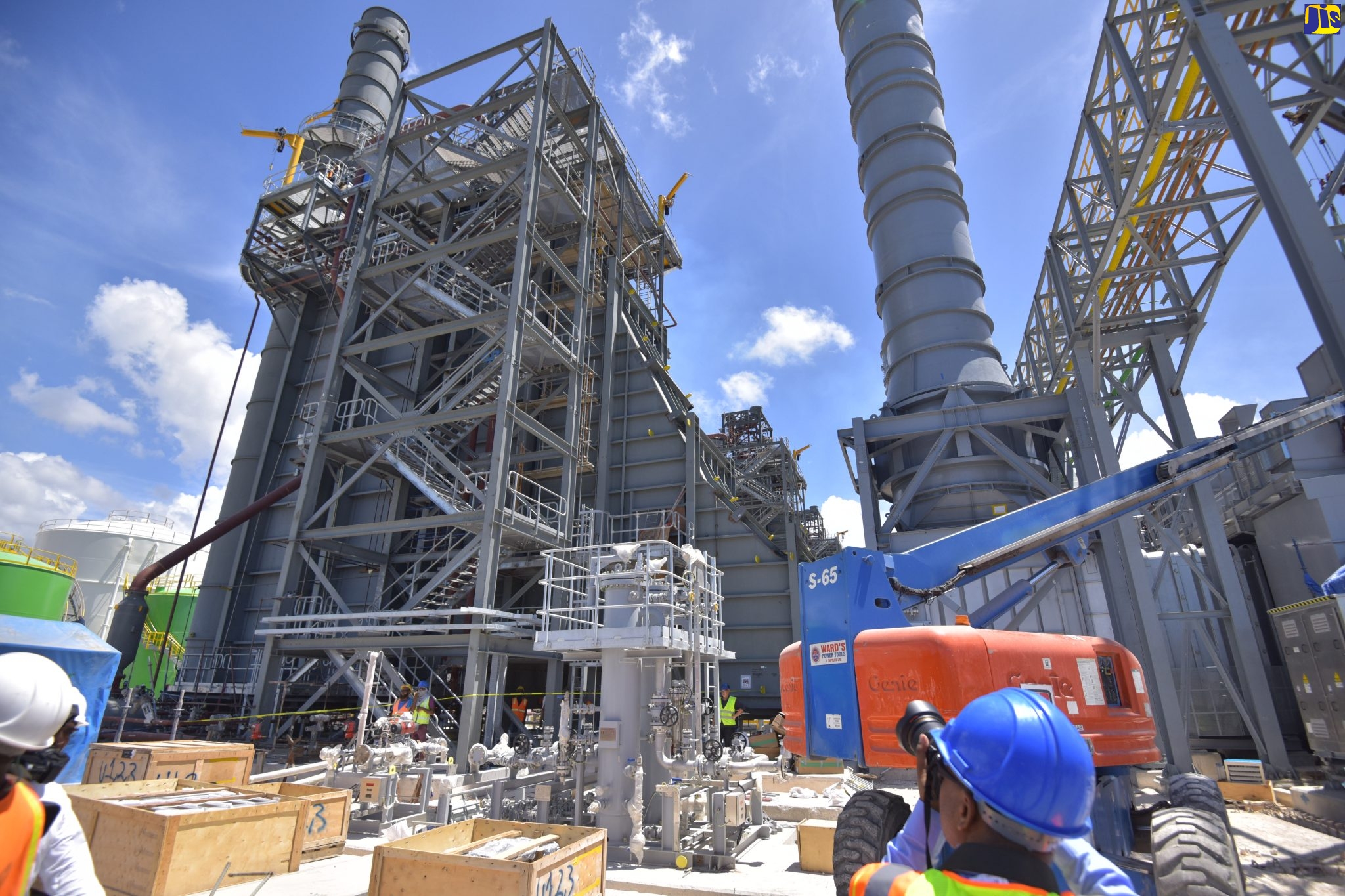On December 17, 2019, the Jamaica Public Service Company (JPS) commissioned a new 190-megawatt (MW) natural gas power plant in Old Harbour, St Catherine, propelling Jamaica towards the realm of cleaner, efficient energy.
The plant generates electricity using natural gas and is the most efficient fuel-burning power plant in the island.
President and Chief Executive Officer of JPS, Emanuel DaRosa, tells JIS News that the US$315-million power plant was a huge advancement for Jamaica.
“Older power plants are in some cases 40-50 years old and this brand-new power plant’s efficiency is twice that of the 40-year-old power plant it replaced. It produces the same amount of energy with half the amount of fuel,” he explains.
The plant is operated by South Jamaica Power Company (SJPC), a JPS affiliate, and was renamed the South Jamaica Power Centre after it was commissioned.
It is the second power plant in Jamaica to operate on natural gas, following the conversion of JPS’s Bogue Power Station in Montego Bay from automotive diesel oil in 2016.
More than 470 Jamaicans were employed to work on the plant during its construction, for which ground was broken in March 2017. The Combined Cycle Power Plant can support 300,000 homes and can use automotive diesel oil as a backup fuel.
“From an environmental perspective, the particulate reduction is approximately 90 per cent with this plant because it uses natural gas. When this plant is in operation you can’t tell if one, two or three units are in operation as opposed to the older plants where you could tell which units were operating based on the smokestack,” Mr. DaRosa says.
Studies have shown that natural gas is environmentally friendly because it burns cleaner than other fossil fuels such as diesel. It’s safer, less expensive and easier to store when compared to other fossil fuels.
“This plant offers much greater flexibility; its ability to turn up and down is much greater than some of the older power plants, which would take six to 10 hours to come online and would have to be on for a minimum of 12 hours, so the ability to schedule them on and off wasn’t there,” the Chief Executive Officer states.
Mr. DaRosa notes that a top priority for JPs is to move away from a strong dependence on heavy fuel oil (HFO) and invest in other sources of energy such as natural gas and renewable energy.
“Our overall investment strategy focuses on fuel diversification, moving away from a 95 per cent reliance on fuel oil. The volatility of oil has taken this country to prices of electricity such as US$0.40 to $0.45 cents per kilowatt per hour. We’re not there today, but we could get there again if we don’t continue to diversify our fuels. With the older plants, we couldn’t integrate renewables the way we do today, given this new power plant,” he says.
The newly commissioned plant supports the national goal of cleaner energy and is expected to stabilise electricity costs over the long-term while enabling energy security for the nation.
“Over the next three years, we will be working on a 40-kilometre 38-kilovoltage transmission line that’s going to connect old Harbour to Kingston. When you put all that we do together, you see that we are an important part of building this nation and helping it move forward and we are looking to work closely with the Government and other energy partners to do so. We’ll move this grid forward and bring it into the 21st century,” Mr. DaRosa shares.
He explains that with the planned retirements of older plants and the growing energy demand in the Corporate Area, the electric grid will not be able to safely or economically supply customers without a new transmission line to bring a majority of the power from the generation facility in Old Harbour.
The electric energy for Kingston is usually generated from the Hunts Bay station. However, JPS plans to decommission part of the plant, which was built over two decades ago.
The Hunts Bay plant is scheduled to be decommissioned by 2023, and feeding power from Old Harbour to Kingston is not expected to negatively impact the St Catherine communities.
“We’re going to spend more than US$100 million over the next five years to rehabilitate the grid, and this does not reflect some of the generation investment we’re going to have to make. We have a 171-megawatt, right of first refusal generation (plant) [which] we will be operating shortly,” Mr. DaRosa informs.
He underscores that “there is a tremendous amount of investment going on in the energy field, and the Old Harbour Power plant was just one example”.
JPS is the sole distributor of electricity in Jamaica and is a partially State-owned company. It owns and operates four power stations, nine hydroelectric plants, and one wind farm across the island, and serves over 640,000 customers each day.
